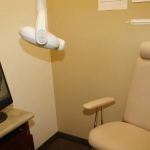How to Fix a Lost Dental Crown at Home – Simple Steps for Temporary Relief
- 1. Understanding the Importance of a Dental Crown
- 2. Steps to Temporarily Fix a Lost Dental Crown at Home
- 3. What to Avoid When Fixing a Dental Crown at Home
- 4. When to See a Dentist for a Lost Dental Crown
- 5. How to Keep Your Mouth Safe Until the Dental Visit
1. Understanding the Importance of a Dental Crown
A dental crown is a vital restoration that covers a damaged or decayed tooth, helping to restore its strength and function. It can also improve the appearance of a tooth that has been severely worn or broken. Crowns are used for both cosmetic and functional purposes, providing support for teeth that have undergone root canal therapy or have significant cavities. Losing a crown can be uncomfortable and may expose the tooth underneath to further damage or infection if not addressed promptly.
Understanding the importance of your crown helps you realize why it’s essential to fix a lost dental crown as quickly as possible to avoid further complications like tooth sensitivity or decay.
2. Steps to Temporarily Fix a Lost Dental Crown at Home
If you lose a dental crown, it’s important to take quick action to temporarily fix it and prevent further issues before your dental appointment. Here are a few steps to help you manage the situation at home:
- Step 1: Clean the Crown and Your Tooth: Carefully clean both the inside of the crown and the exposed tooth using water or a mild soap solution. Avoid using toothpaste, as it may cause irritation.
- Step 2: Use Temporary Dental Cement: You can purchase temporary dental cement at most pharmacies. Apply a small amount of this cement inside the crown and place it over your tooth. Gently press it into place and bite down softly to ensure it fits properly.
- Step 3: Avoid Hard Foods: Until you can visit your dentist, avoid eating hard or sticky foods that could dislodge the crown.
- Step 4: Keep It Clean: Be sure to keep the area clean by brushing gently around the crown and avoiding flossing in the area until the permanent crown can be applied.
These steps can help you temporarily secure your crown and protect the exposed tooth until you can see your dentist for a permanent solution.
3. What to Avoid When Fixing a Dental Crown at Home
While it may be tempting to take matters into your own hands, there are several things you should avoid when attempting to fix a lost dental crown at home:
- Avoid superglue: While superglue may seem like a quick fix, it’s not safe for your mouth and can cause irritation to the gums or damage to the crown.
- Don’t skip the dentist: Even if the temporary fix seems to hold, it’s crucial to see your dentist as soon as possible for a permanent solution. Prolonging treatment can lead to further tooth damage or decay.
- Avoid overuse of temporary cement: Overapplying cement can make it difficult for your dentist to remove the crown later, complicating the process of re-cementing or replacing it.
By avoiding these common mistakes, you can ensure that your temporary fix stays in place while preventing any further damage to your tooth or crown.
4. When to See a Dentist for a Lost Dental Crown
If your dental crown has fallen out, it’s essential to make an appointment with your dentist as soon as possible. A lost crown can expose your tooth to bacteria, increasing the risk of infection or further decay. If the tooth underneath the crown has been damaged or is causing pain, a dentist will need to examine it and recommend the best course of action, which could involve re-cementing the existing crown or creating a new one.
Even if you’ve successfully fixed the crown temporarily, seeing a dentist is crucial for long-term oral health. A professional will ensure that your tooth and crown are properly cared for, preventing any future complications.
5. How to Keep Your Mouth Safe Until the Dental Visit
While waiting for your dentist appointment, it’s important to take precautions to ensure the exposed tooth remains safe and protected. Here are a few tips:
- Be gentle when eating: Stick to soft foods and avoid chewing on the side of your mouth where the crown is missing.
- Rinse with salt water: Use a warm saltwater rinse to keep the area clean and reduce the risk of infection.
- Consider a mouthguard: If you grind your teeth at night, wearing a mouthguard can prevent further stress on the exposed tooth.
By following these simple guidelines, you can help keep your mouth safe until your dental appointment and prevent further damage to your tooth or crown.
For more advice on managing dental issues like lost crowns, or to learn about safe, effective dental products, visit Dentistry Toothtruth for more information.







 Desert Ridge Smiles - Radhika Rawal DDS5.0 (145 review)
Desert Ridge Smiles - Radhika Rawal DDS5.0 (145 review) Contemporary Dental Implant Centre4.0 (79 review)
Contemporary Dental Implant Centre4.0 (79 review) Brilliant Endodontics4.0 (263 review)
Brilliant Endodontics4.0 (263 review) La Verne Dental Group4.0 (220 review)
La Verne Dental Group4.0 (220 review) Isthmus Dental, Ltd4.0 (215 review)
Isthmus Dental, Ltd4.0 (215 review) Great Expressions Dental Centers - Pelican Preserve4.0 (639 review)
Great Expressions Dental Centers - Pelican Preserve4.0 (639 review) The Importance of Oral Health Education During Pregnancy for a Healthy Pregnancy
The Importance of Oral Health Education During Pregnancy for a Healthy Pregnancy Best Tips for Brushing Your Teeth Properly for Healthy Gums: Essential Techniques for Oral Health
Best Tips for Brushing Your Teeth Properly for Healthy Gums: Essential Techniques for Oral Health Why Skipping Dental Checkups Can Lead to Bigger Oral Health Problems
Why Skipping Dental Checkups Can Lead to Bigger Oral Health Problems Advantages of Porcelain Dental Restorations
Advantages of Porcelain Dental Restorations How Can Diabetes Cause Tooth and Gum Problems? Preventing and Managing Oral Health Issues
How Can Diabetes Cause Tooth and Gum Problems? Preventing and Managing Oral Health Issues Healthy Habits for Promoting Good Oral Health and Hygiene: Tips for a Healthy Smile
Healthy Habits for Promoting Good Oral Health and Hygiene: Tips for a Healthy Smile